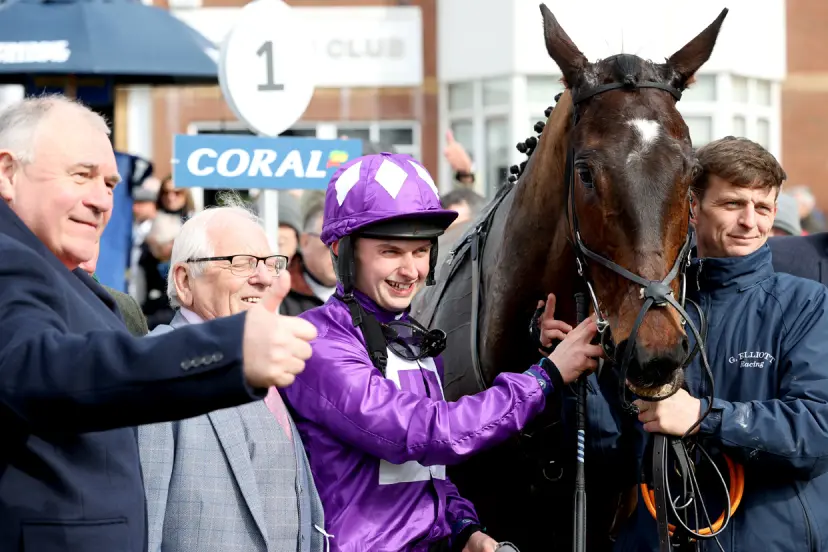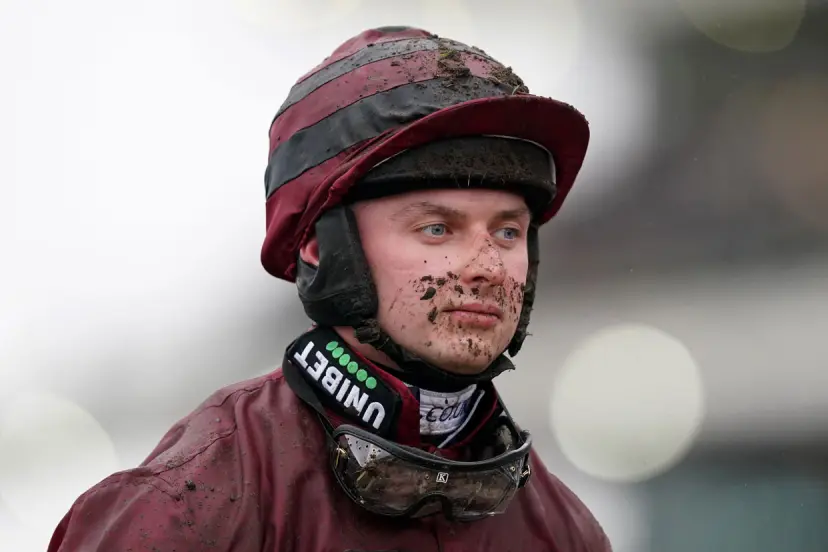Grand National trends: Key insights from the last 20 races
Published:
The Grand National is one of the most popular events on the UK sporting calendar, with millions of people – many of whom do not usually follow racing – betting on it every year.
It ranks among the most difficult steeplechase races in the world, consisting of 30 fences spread over two full laps of the Aintree racecourse.
We have studied all 795 participants from the previous 20 races to highlight some key Grand National trends ahead of the 2023 showpiece.
Is it worth backing one of the Grand National favourites?
The gruelling nature of the Grand National makes it notoriously hard to predict, with winners’ odds ranging from 4/1 (Tiger Roll in 2019) to 100/1 (Mon Mome in 2009) over the past two decades alone.
While nothing is guaranteed in such a chaotic race, the Grand National odds remain a useful barometer of a horse’s credentials. Two-thirds of participants priced at 8/1 or shorter – generally the first or second favourites – have gone on to finish the race, with nearly four in 10 managing to finish in the top four.
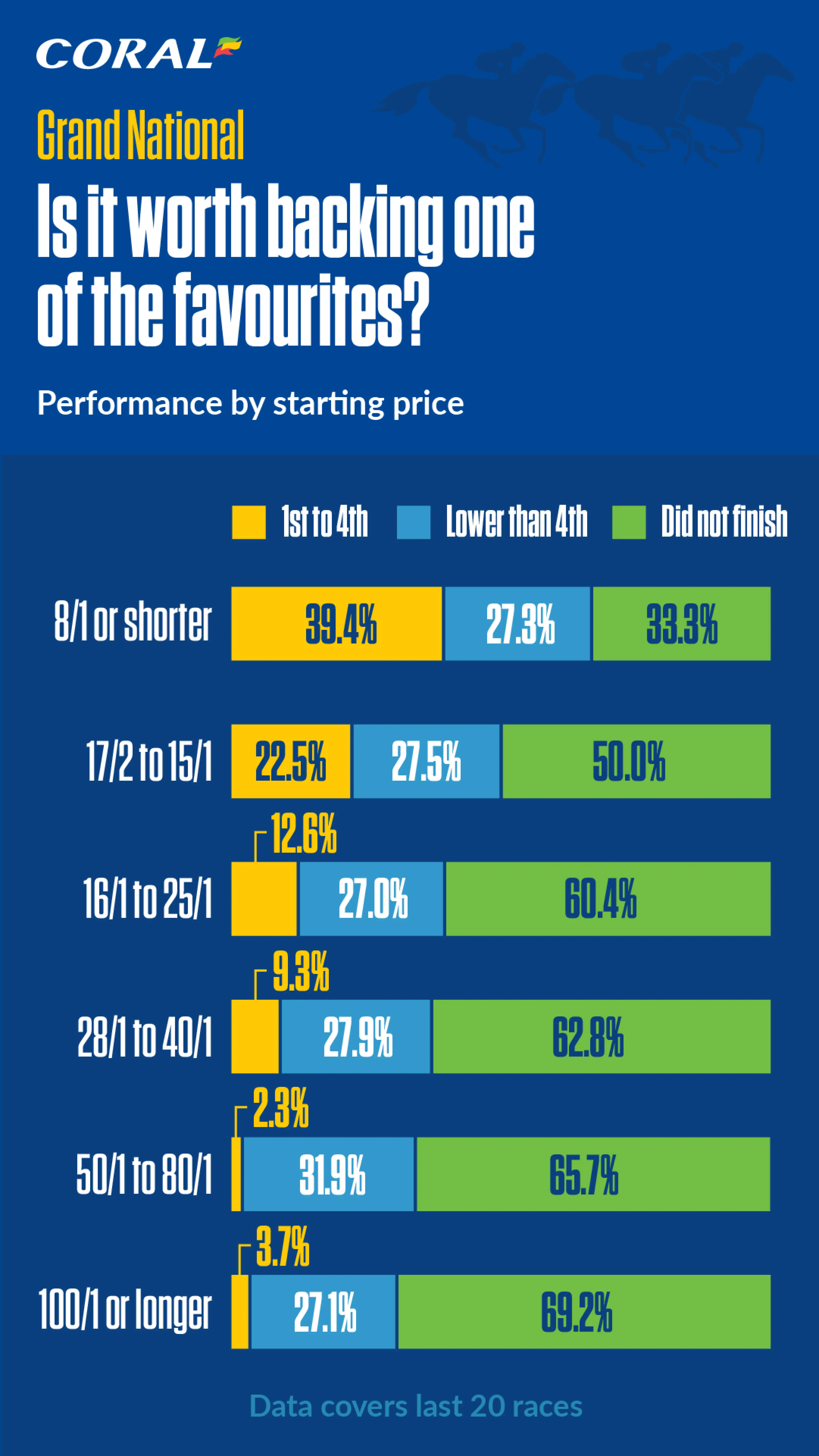
As might be expected, a horse’s likelihood of completing the course falls in line with its pre-race odds. However, we have seen rank outsiders pay out at a faster rate than those considered more worthy of a punt. As well as Mon Mome winning in 2009, Philson Run (2007), Vics Canvas (2016) and Balko Des Flos (2021) have all placed after being priced at 100/1 before the race.
Who has the best Grand National record?
The Grand National is racing’s equivalent of a lottery, with even the best jockeys and trainers finding it tough to master. For example, the legendary 20-time champion jockey AP McCoy required 15 attempts to win the National aboard Don’t Push It in 2010, with his overall record reading one win and five further podium finishes in 20 outings.
Switching attention to modern-day riders, Jack Kennedy has the best record despite so far failing to top the rostrum, having twice finished third – on Bless the Wings in 2018 and Delta Work in 2022 – and only once failing to finish in five starts. Last year’s winner Sam Waley-Cohen is next on the list with his victory aboard Noble Yeats following top-four finishes on Oscar Time in 2011 and 2013, but he has since retired so will not compete at Aintree this year.
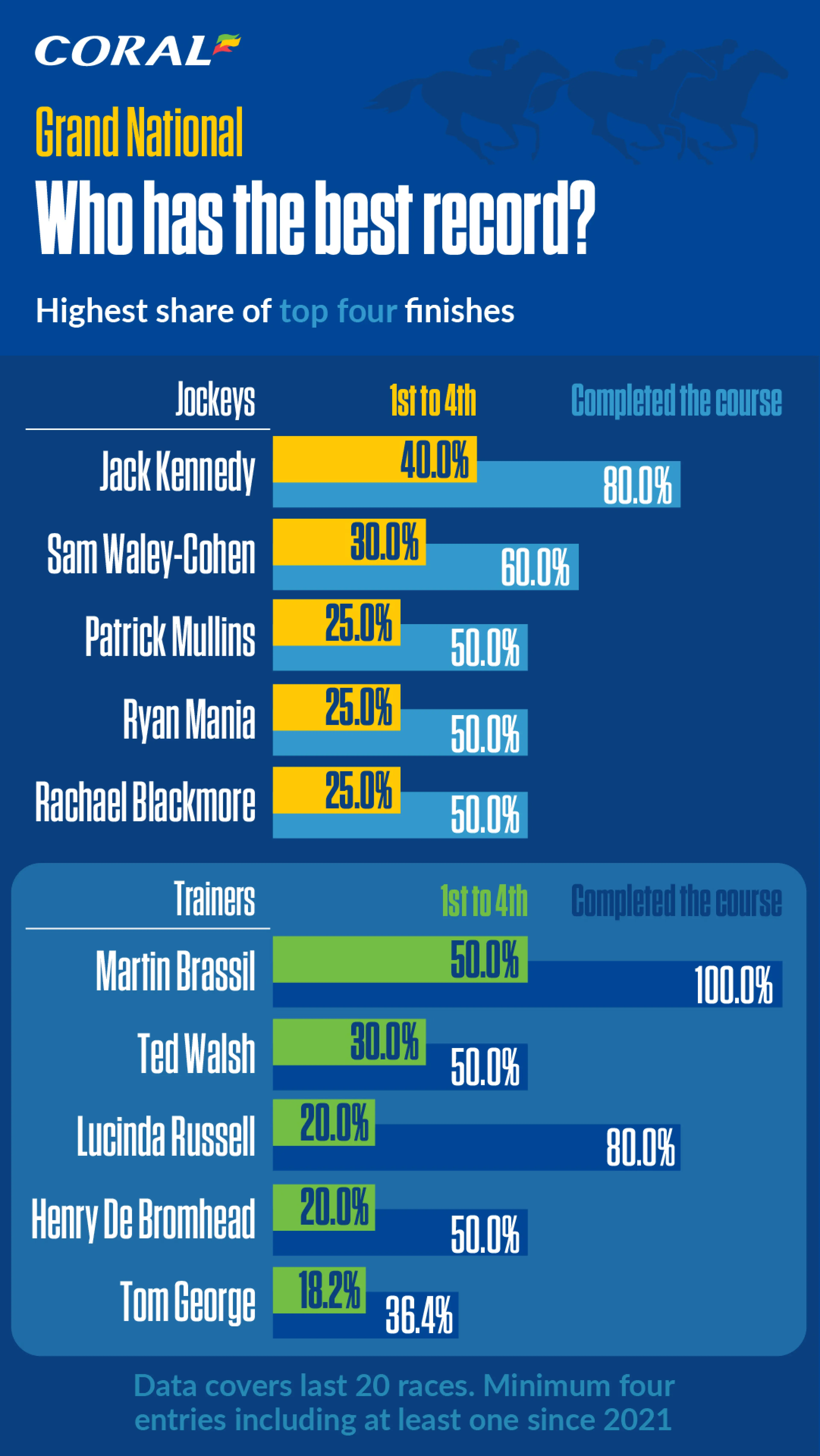
Meanwhile, Irish trainers have recently held sway at Aintree, with Emmet Mullins’ victory in 2022 at his first Grand National being the fifth from an Irish stable in the past six years.
Fellow Irishman Martin Brassil ranks as the most successful among active trainers with at least four entries. Despite remaining outside the winners’ circle since 2006 – when Numbersixvalverde powered his way to a six-length victory – Brassil is the only trainer with a 100 per cent completion rate.
Does experience pay at the Grand National?
There are 30 Grand National fences to navigate and more than four miles to cover, so the race requires a unique mix of youthful energy and steeplechase experience to be successful.
Although Noble Yeats won in 2022 as a seven-year-old, a study of Grand National trends suggests that the youngest horses in the field are unlikely to stay the course. In fact, Noble Yeats is the only participant aged seven or under to finish in the top four since 2002.
Eight-year-olds have been statistically the most successful during this period, with 14 per cent managing to place and 44 per cent crossing the finish line. However, if you place a premium on experience then an 11-year-old could be worth a look – these have collectively fared better than nine- and 10-year-olds at both finishing the race and doing so as one of the first four.
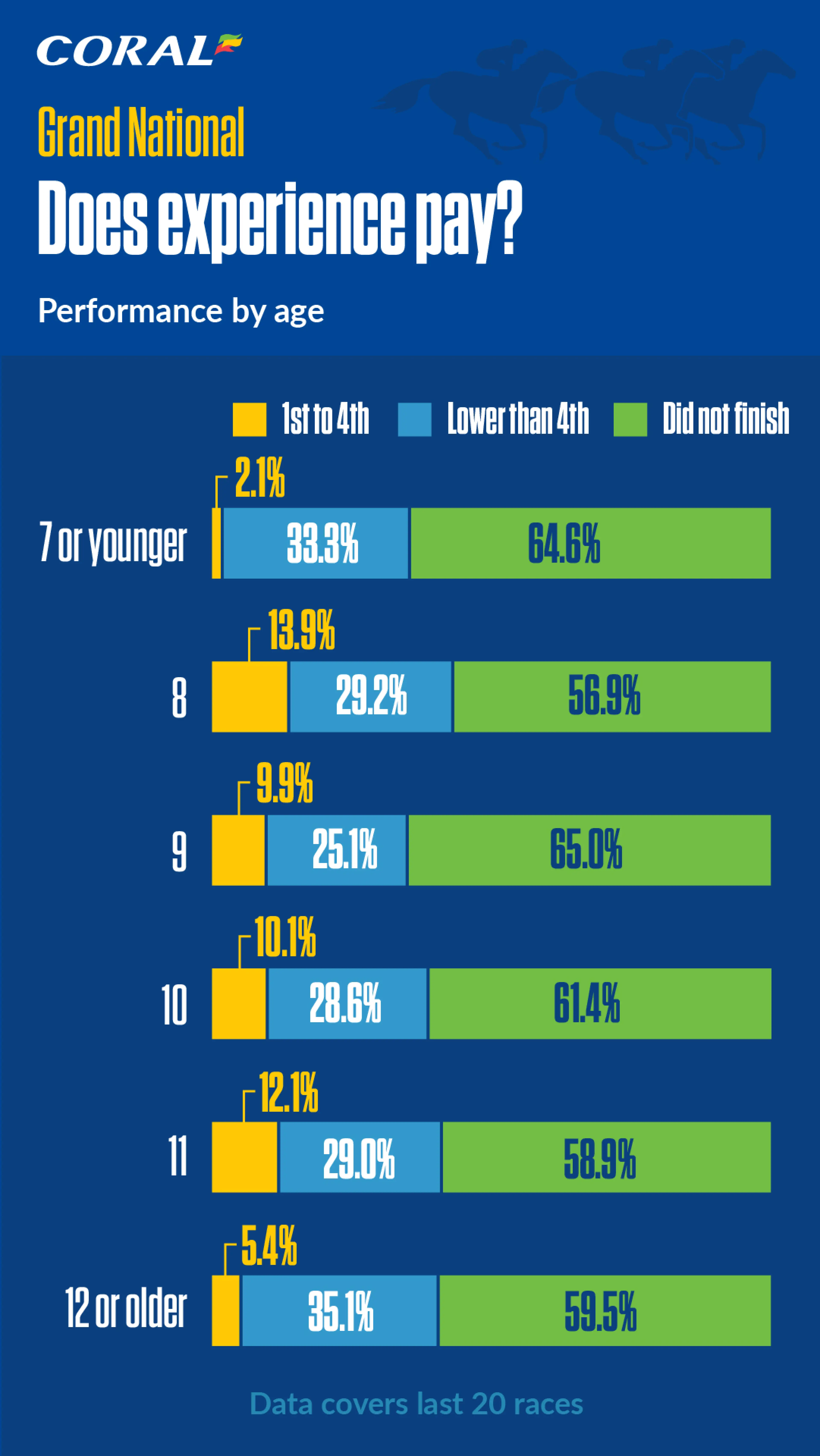
Knowledge of the Aintree racecourse is equally if not more important than a horse’s age, with 15 of the past 20 Grand National winners having run at the Merseyside track at least once before their triumph.
The 2004 winner Amberleigh House is perhaps the best example of local knowhow paying dividends. The Irish thoroughbred, who was aged 12 at the time of his career-defining triumph, had competed over the Aintree fences on six previous occasions – once at the Topham Chase, twice at the Grand National and three times at the Becher Chase.
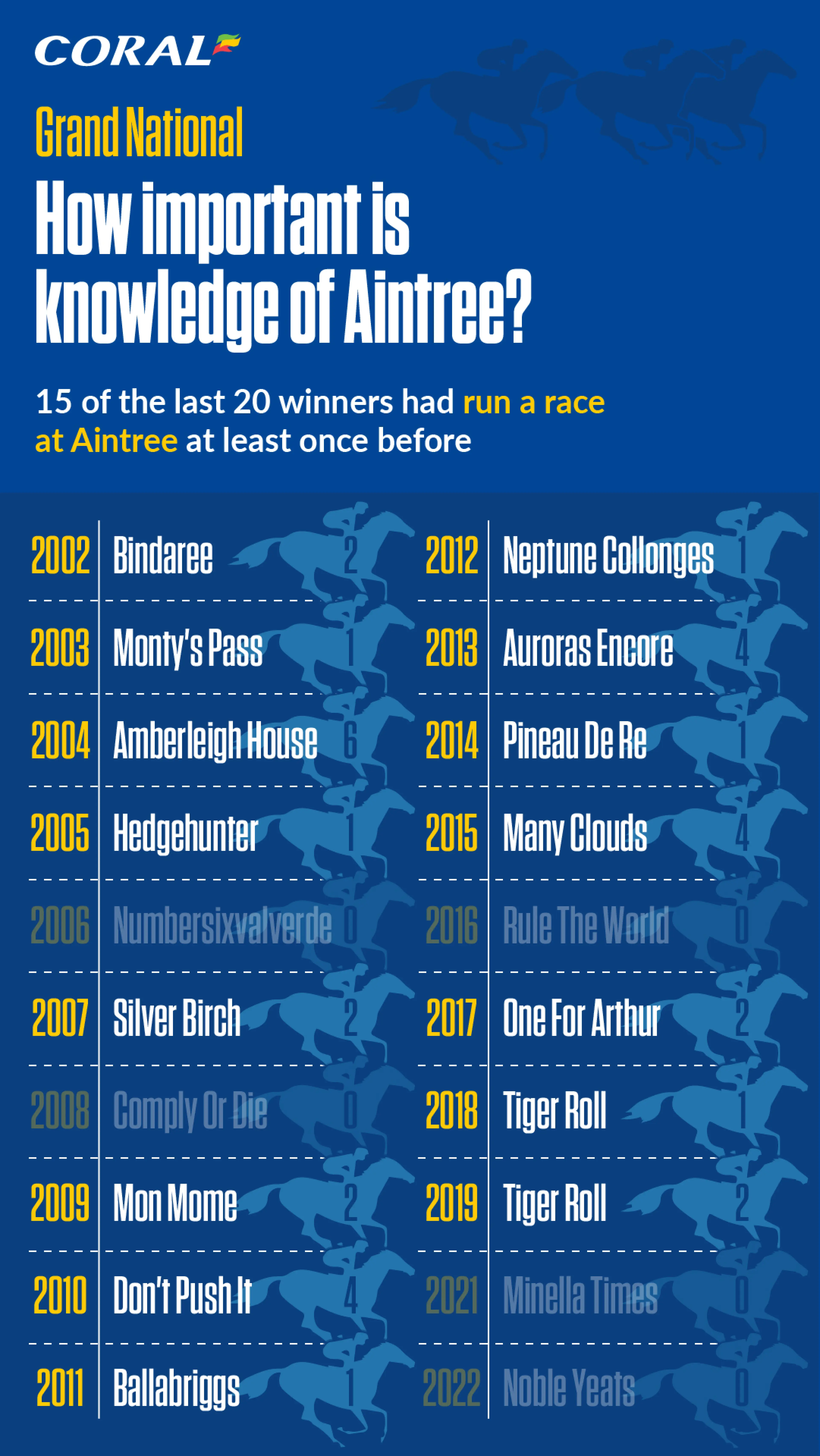
Aintree experience is not the be all and end all, however, with three of the last six victors – including both of the previous two – having never run over the famous fences before.
Where could the Grand National be won and lost?
Watching the Grand National can be an excruciating experience, as you wait for your horse to be announced as a faller after each and every fence.
The harsh fact in Grand National trends is that a horse is more likely to fall, unseat their rider or pull up than they are to finish the race. Since 2002, 487 out of 795 participants (61 per cent) have failed to complete the course, with only one race in that period (2005) seeing more than half of starters make it to the end.
Of the 16 fences on the course, the world-famous Becher’s Brook is statistically the toughest to negotiate. While Becher’s is one of the smaller fences from the take-off side, it is especially awkward due to the steep drop of almost seven feet on landing. Riders must clear it once on each lap, with 65 entrants failing to do so over the past 20 races.
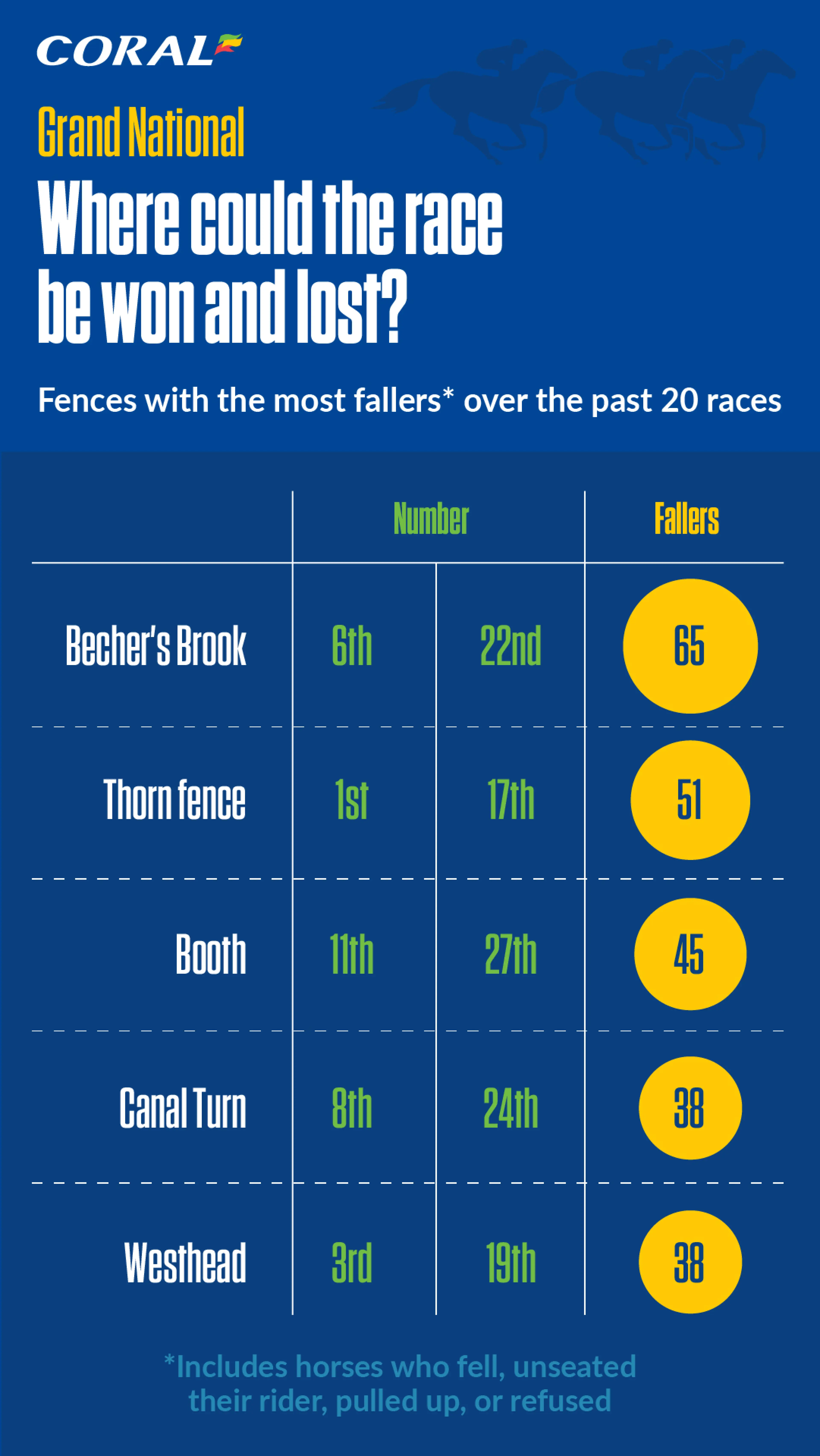
Somewhat surprisingly, the very first fence of the National – known as the Thorn fence – has claimed the second-highest number of victims after Becher’s since 2002. Several horses tend to fall early because of over-exuberance, with later fences posing more of a technical challenge.
View the latest Grand National odds
All odds and market correct at date of publication


